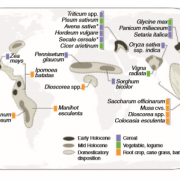
Review: The domestication syndrome in vegetatively propagated field crops (Ann. Bot.)
Plant Science Research WeeklyArcheological remains and genetic analyses of ancient DNA have revealed that the loss of seed dispersal marks the onset of domestication for sexually reproduced crops such as cereal, legume and oils seed crops, for which annual cultivation is based on sowing seeds. In contrast, less is known about the…
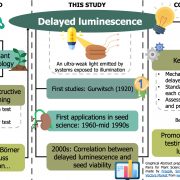
Review: Delayed luminescence of seeds: are shining seeds viable? (Seed Sci. Technol.)
Plant Science Research WeeklyMost of the current methods for assessing seed viability are time-consuming and destructive. As an alternative, some authors have suggested using procedures based on delayed luminescence; an ultra-weak light emitted by biological materials exposed to illumination. Here, Adeboye and Börner review the…
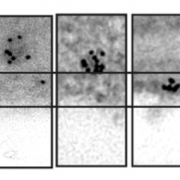
How to transfer lipids from one membrane to another during thylakoid biogenesis (PNAS)
Plant Science Research WeeklyThe thylakoid membranes are located in the stroma of chloroplasts and house the machinery for the photosynthetic light reactions. They emerge largely de novo during the transition from pro-plastids into mature, photosynthesizing chloroplasts. Generating new thylakoid membranes requires a supply of lipids,…
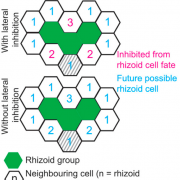
miRNA-mediated lateral inhibition controls rhizoid cell patterning in Marchantia polymorpha (Curr. Biol.)
Plant Science Research WeeklyIn multicellular organisms, the patterning of different cell types in spatial arrays is regulated through several mechanisms, one of which is lateral inhibition, a process well characterized in metazoans. In this process, an individual cell transmits signals to neighboring cells to instruct a different…
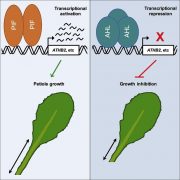
AT-hook transcription factors restrict petiole elongation by inhibiting PIF-activated genes (Curr. Biol.)
Plant Science Research WeeklyThe AT-hook motif nuclear localized (AHL) transcription factor family has one or two DNA-binding motifs to bind to AT rich DNA regions, and they also have a conserved PPC-DUF domain for protein-protein interactions. AHLs affect a wide range of biotic and abiotic responses but the mechanism of how they…
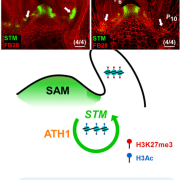
Self-activation loop of STM maintains the meristematic activity of cells at leaf axil (Curr. Biol.)
Plant Science Research WeeklyPlasticity in plant development comes from the meristematic cells that are maintained throughout plant growth and among other things produce lateral organs such as shoot branches. In this paper, Cao et al. show that the self-activation loop of SHOOT MERISTEMLESS (STM), a meristem marker gene that encodes…
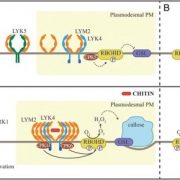
Self-isolation to the rescue – how plasmodesmata initiate signaling in response to chitin (PNAS)
Plant Science Research WeeklyPlant cells are known to initiate local and systemic signaling in response to certain stressful conditions to safeguard cells in the immediate vicinity as well as that are far from the site of stimuli. In this study, Cheval and co-workers have characterized a pathway in plant cells for sensing and responding…
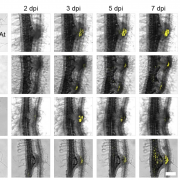
Subtilase activity in intrusive cells mediates haustorium maturation in parasitic plants (bioRxiv)
Plant Science Research WeeklyParasitic plants develop unique structures called haustoria that penetrate into the host plant vasculature, from which they take nutrients. During this process, haustorial epidermal cells differentiate into specialized cells called intrusive cells, which eventually re-differentiate into a xylem bridge…

DNA methylation and integrity in aged seeds and regenerated plants ($) (Seed Sci. Res.)
Plant Science Research WeeklyUnderstanding seed aging is crucial to comprehend seed longevity in the field and to design ex situ conservation programs. However, the mechanisms behind seed aging are underexplored. In this paper, Mira et al. assessed the changes in DNA integrity and methylation between aged and non-aged seeds of Mentha…

